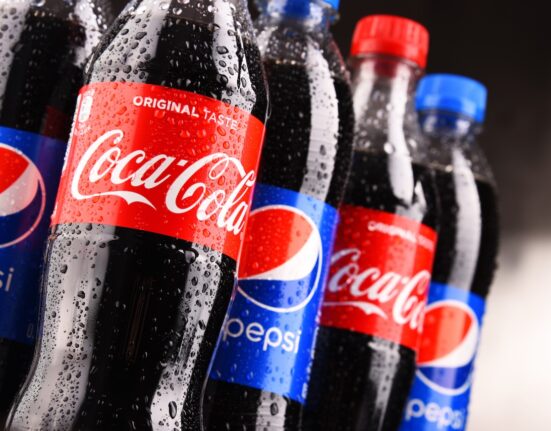Since the dawn of civilization, humanity has been faced with the challenges of living in harmony with the natural world. Civilizations that achieved this balance thrived for thousands of years, like the ancient Egyptians and Mayans. Those civilizations, such as the Sumerians, who abused and exploited the land that gave them life, met their untimely demise, forcing their people to flee and settle elsewhere.
The concept of sustainability is not new. In fact, one could argue that sustainability has been practiced and incorporated into various cultural and religious practices for thousands of years. But what happened? Why do we find ourselves on the precipice of environmental collapse?
The answer to these questions is complex and nuanced, yet also simple and clear. We as a species largely demand access to everything at anytime, anywhere, and believe that we can tame nature to meet these demands. In short, we have let greed, naivety and convenience overcome us, and that has come at a great cost.
So, how do we fix this? How do we become sustainable, and what exactly does that mean? Innovation is often a word that is thrown around. We hear that we must be more innovative if we are to solve today’s problems. Yes, this is true, but what is often overlooked is that innovation isn’t just about new ideas. It’s also about letting go of old ways.
Nature Holds the Answer
Since the Neolithic Revolution, humans have been farming land for sustenance, thereby giving way to the rise of modern civilization. Over centuries of farming, humans have selected wild plants for domestication and through that process plants evolved and adapted, resulting in new varieties. Throughout most of this period, humans have lived in relative harmony with nature, understanding that the land would need to be respected for it to be sustained. However, with the onset of the Industrial Revolution things began to drastically change.
The priority shifted from land protection to enhancing yields for profit, leading to monocultures replacing indigenous plants. This prompted the use of fertilizers and pesticides, causing escalated water demand and soil degradation. Instead of rectifying the damage, we pushed forward, thinking we could master nature, and now aim to genetically modify crops to fit our damaged environment. This raises the question: where is this path leading us?
Nature’s network is far more complex and sophisticated than we will ever understand. We need to let go of the idea that we can simplify nature. That means moving away from monocultures and gene-edited crops and back to native crops. For thousands of years, humans moved plants around the world and contributed to the natural evolution and creation of new varieties.
Fresh produce is not an iPhone. We don’t need a new version every 12 months. New varieties will appear naturally, but we must be patient and respectful. By this simple act alone, we can begin to solve many of the problems we see today that are a result of biodiversity loss such as soil erosion, water shortages, high carbon emissions, native habitat loss and more. Sure, we won’t be able to enjoy the same exact banana variety every day of the year, but is that not worth the price to ensure the existence of our species?
Waste Should Not Exist
Just as humans had begun their journey in agriculture working in harmony with nature, they did the same with waste — or perhaps, the lack thereof. What we call “waste” is what nature calls food. The concept we understand as waste is a human construct — it should not exist. No other species on the planet produces waste, and the same could be said about humans for most of their history.
Initially, humans created minimal, fully biodegradable waste like clay pots and wood barrels, causing no environmental impact. Waste, even excrement, was recycled or reused till the early 20th century. However, we’ve transitioned from this circular system to a linear one where waste is a consequential byproduct.
There are many contributors to the waste problem, but perhaps none is more to blame than plastics. The biggest problem with plastics is that it is a human-made, synthetic material; in other words, it does not occur naturally.
Plastics cannot be returned to nature, for that reason alone they disturb the circular system. The core intent behind the creation of this synthetic material was, ironically, to maintain the availability of natural resources on Earth. With plastics, people could turn away from natural resources like wood, rubber and ivory, and they did.
While the depletion of natural resources had been averted early on, plastics are now at the forefront of threatening all of nature. The waste streams available to plastics are limited to reuse and, when possible, recycling. Many plastics today are poly materials, meaning they are made from different types of plastics thus making them more difficult for facilities to recycle.
Much of the produced plastics degrade into microplastics in landfills, releasing potent greenhouse gas methane. Microplastics, now found in all environments — soil, marine and air, contaminate fresh produce, which absorbs them from soil and water.
The combination of a synthetic material with our culture of use and discard has broken the circular system that the natural world functions and relies upon. While plastics may have contributed to the protection of natural resources and enhanced the safety and shelf life of goods, they are now threatening the very fabrics of our natural world.
Unfortunately, there is no simple answer to this problem, but one thing is certain: continuing with a linear system is not sustainable. We need to rethink the concept of waste and restore the circular system that our species was part of only two short centuries ago. That means adopting methods from our ancestors, using the technology of today. From seaweed to mycelium, nature has provided us with the tools we need. It is up to us to recognize these tools and integrate them into our solutions.
A sustainable future is within reach, but it will take courage and determination. The answers provided here may sound simple, but it will require a revolution in our thoughts and actions. The world is ripe for change. The question is, will we act before it rots?





